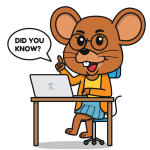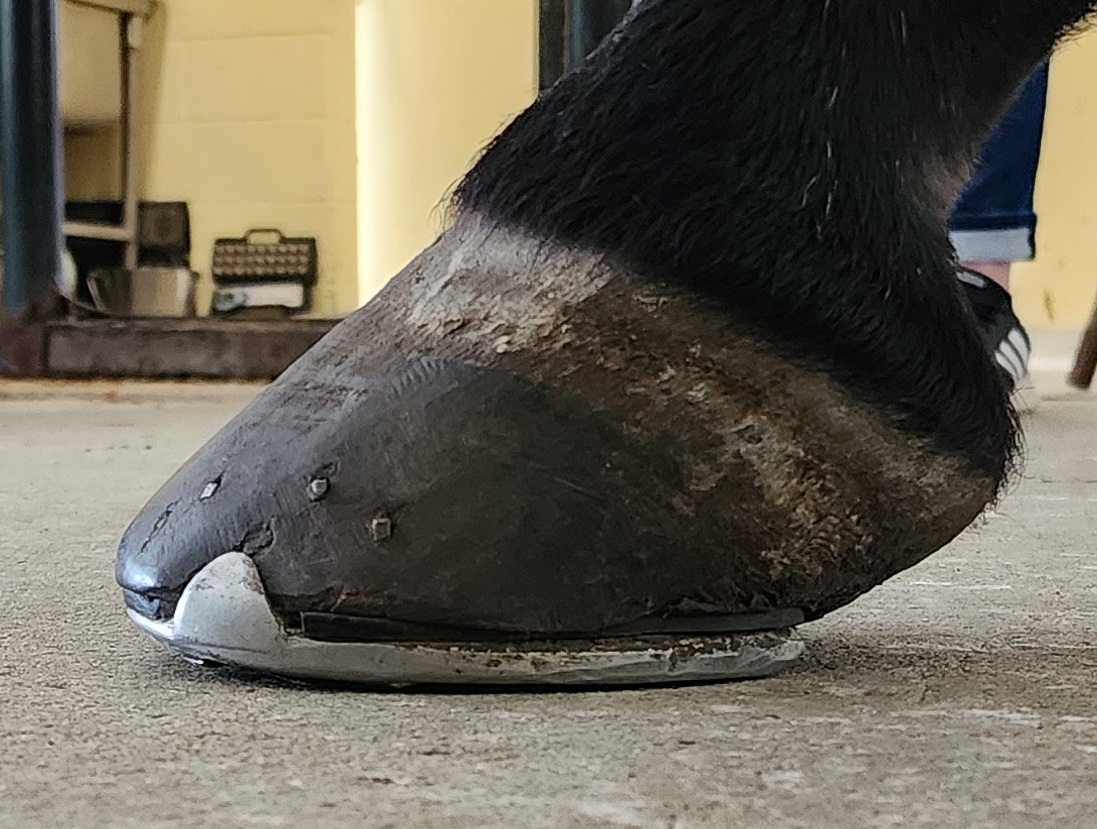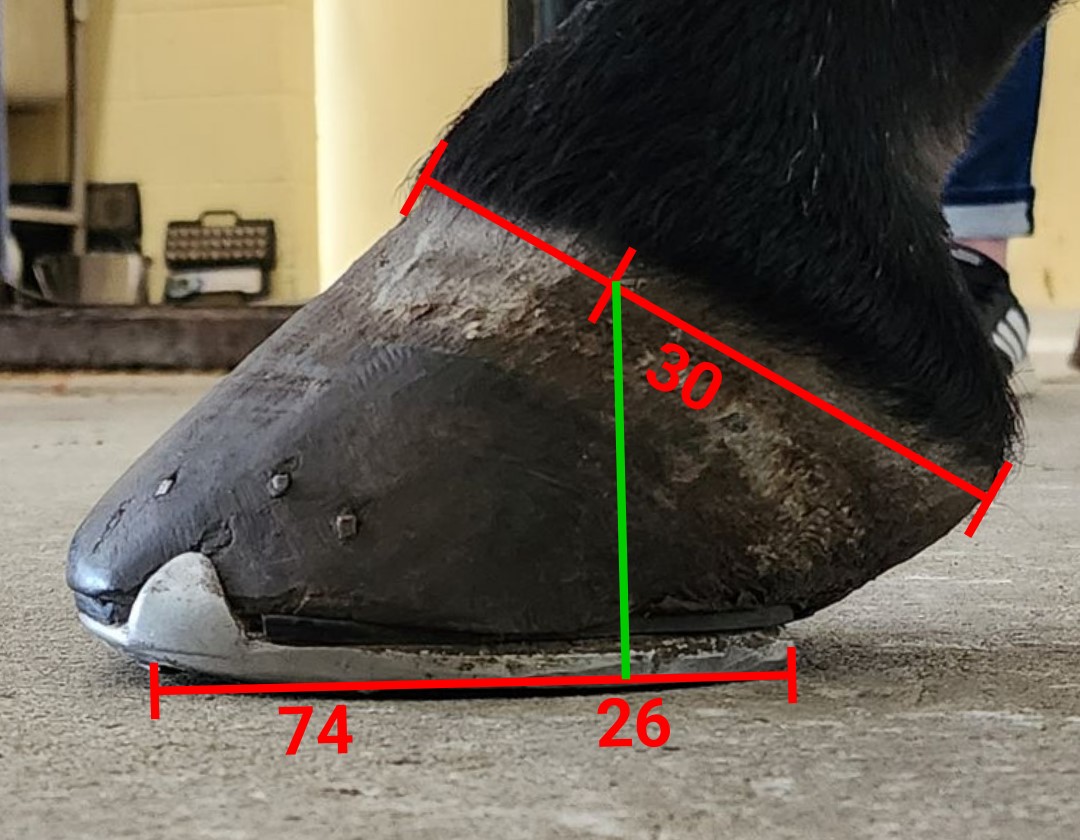Whinny’s Wisdoms

Hey everyone, Whinny here. As the resident mouse, I spend a lot of time around feet, and what you see a lot, you have a lot of questions about. This has led to a very steep learning curve for this mouse about what horse feet should look like. Really, all things feet. I started with the abscess blog, and have really gone on quite the educational journey from there. Tony has been very helpful throughout. He’s been teaching me about all the ways humans mess up horse feet (his words, not mine). So, I thought I’d go over some of that knowledge with you guys this week!
A Giant Middle Finger
Tony and I were comparing our paws while discussing horse feet. We both have 5 toes on our front paws, with claws on each. Then we looked at one of the horses in the hospital to better discuss how weird horse toes are. Tony told me that one toe they have is actually a really long version of our middle toe. The hoof is basically a fingernail that goes all the way around, and it only covers the very last bone. If we are comparing that to a human, the finger is everything towards the ground from the fetlock, and the cannon bone is the middle bone of the palm. The wrist is called the knee, because as Tony constantly reminds me, horse people are weird.
Whinny Wisdom: The laminae is the name of the tissue that holds the hoof to the bone. Swelling gets the suffix -itis, so laminitis is swelling of the laminae.
Lots of Physics
Every time a horse (or mouse, or person) steps down, force goes back up. This is physics. Horses are big and so they have a lot of force. Then add the design of standing on one toe, and all those forces are concentrated. Now add running, jumping, turning fast, and all the other things horses do, to the one-toe-design and there’s really a lot of force going up that one tiny toe! It’s hard to believe it doesn’t break all the time.
The point of all this physics talk is to say everything needs to line up really well on horse feet or those forces are going to go every which way. If you read Part 1 of my Arthritis blog last week, you know what happens when those forces go every which way. It’s not great.
Pictures!
We had a horse in the hospital that was going to get his feet done by our podiatrist, Dr. Staples. I learned a lot hanging out by her shoeing trailer during that appointment! I have some pictures to help explain.
My first picture here is just a foot so you can see it without any markers.

My second picture here has markings from an app called HoofMapp. This app was developed with a whole lot of work from Yogi Sharp. It lets any mouse (or human) take a picture of a horse’s foot, do some measurements, and get a good idea how balanced that foot is. I will say it takes a lot of practice to get just the right picture. Ask any of the Docs here, and they can give you pointers.
Anyway, here’s picture two:

The mark that lines up with the coronary band has a hash mark ⅓ of the way back from the very front of the foot. Yogi looked at hundreds upon thousands of x-rays and pictures of feet to determine that this point is pretty darn close to where the weight should be centered on the foot. The line at the ground surface goes from front to back of the weight bearing surface.
Notice I said weight bearing. If you look closely at the line, you’ll see it goes from the spot at the front where the shoe touches the ground to the very last spot of the shoe at the heel. Next, a perpendicular line is drawn from that hashmark up top to the line along the ground. It should divide that line in half. This is a guideline and it doesn’t have to be exactly 50:50, but you can see this one is nowhere near that!
Back to Physics
I know all those lines were a lot of geometry, but they tell a physics story. They tell us this horse has too much toe. That means when those forces go up the leg, they are way too strong in some parts, and not strong enough in others. While this horse is an extreme example, a toe that’s too long is the most common problem my Docs see. It puts huge forces on the back of the foot. You know what’s on the back of the foot? The deep digital flexor tendon and the navicular bone. They get lots of excess wear and tear from all those forces, and then we’re back at my arthritis blog. But it can all be avoided with proper trimming!
Whew, that was a lot of info! There’s so much to horse feet. I hear the Docs around here talk about how important it is. If you’ve got questions about your horse’s feet, ask them: They love to talk feet! Or you can watch this video my docs made to help you figure out how to assess your horse’s feet without HoofMapp, if it’s easier for you.
That’s it for this week!
~Whinny
P.S. Are you subscribed to my blog yet? There’s a big purple box right below here that you can put your email in, and I’ll send you my blog every Monday. As Tony would say: Don’t rely on Facebook to tell you it’s out!
 Whinny’s Wisdoms is the official blog of Whinny the Clinic Mouse at Springhill Equine Veterinary Clinic in Newberry, Florida. If you liked this blog, please subscribe below, and share it with your friends on social media! For more information, please call us at (352) 472-1620, visit our website at SpringhillEquine.com, or follow us on Facebook!
Whinny’s Wisdoms is the official blog of Whinny the Clinic Mouse at Springhill Equine Veterinary Clinic in Newberry, Florida. If you liked this blog, please subscribe below, and share it with your friends on social media! For more information, please call us at (352) 472-1620, visit our website at SpringhillEquine.com, or follow us on Facebook!
[jetpack_subscription_form title="Subscribe to Whinny's Wisdoms"]

